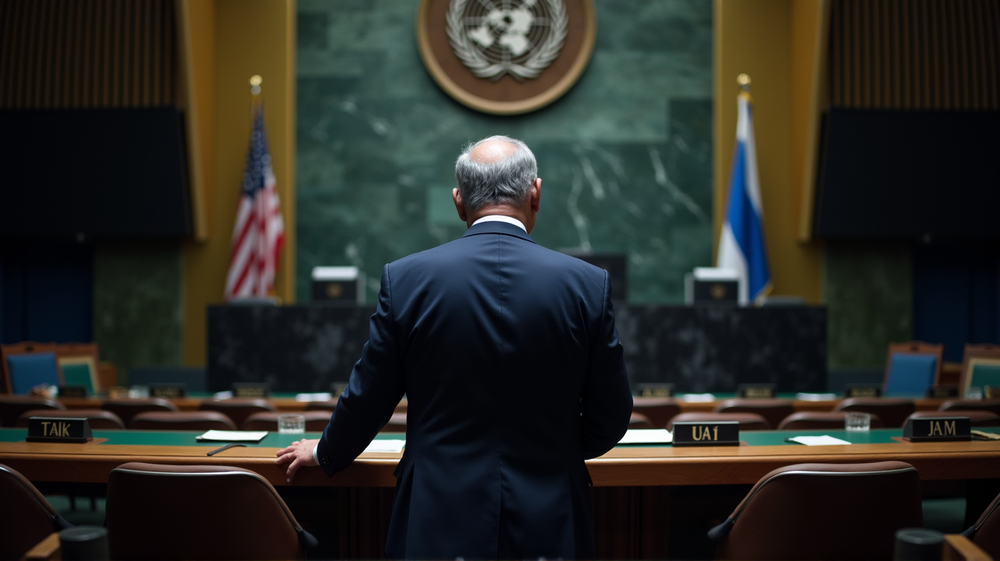In a dramatic turn of events at the United Nations, Israeli Prime Minister Benjamin Netanyahu found his latest address overshadowed by a highly symbolic act: a mass walkout by dozens of diplomats. As these silent protests unfolded, international media seized upon the moment, reframing the focus from his words to the visual spectacle of rows of empty chairs.
The Global Media Lash Out
The day after Netanyahu’s speech, global media outlets were quick to spotlight the walkout. CNN’s coverage was led by video footage showing the departing diplomats, effectively sidelining Netanyahu’s pledges concerning the Hamas situation in Gaza. The British network Sky News dubbed him the “Houdini of the Middle East,” alluding to his ability to navigate political tightrope walks. Yet, they questioned whether his political maneuvers would suffice to revive his reputation or whether this crisis marks his greatest challenge in political escapism.
The Political Fallout
Sky News elaborated on the precariousness of Netanyahu’s political standing, foreseeing potential fallout from recent Middle Eastern diplomatic achievements. His staunch stance could strangle the Abraham Accords, as recent Arab leaders have warned, casting shadows over Israel’s future alliances. Adding intrigue, the possibility of Donald Trump’s contrary plans for Gaza hangs in the balance, complicating Netanyahu’s coalition with far-right partners, critical to his current hold on power.
A Crisis Highlighted by Media Giants
Meanwhile, CBS News titled its segment “Crisis in the Middle East,” embedding criticism of Netanyahu’s “defiant speech.” They spotlighted Microsoft’s move against Israel’s Unit 8200, a nod to mounting international isolation. Fascinating layers of media narratives emerged, emphasizing that top officials from world powers, like the United States and Britain, were notably absent, leaving lesser dignitaries to witness the spectacle.
The Power of Visual Symbolism
Netanyahu’s UN event was a feast for the eyes of the media as more outlets joined the frame. The New York Times described him delivering a “defiant address after dozens walked out,” adding a creative touch with protesters outside and a protest-linked barcode on his suit. The Guardian fixated on a video loop of ambassadors leaving, underscoring the prime minister’s determination against Hamas.
Divergent Perspectives
Arab-language media such as Lebanon’s Al-Manar animatedly referred to a “speech before empty chairs,” while Qatar’s Al-Araby al-Jadeed rallied the narrative by invoking “ongoing violence against Palestinians.” The contrast sharpened as Saudi Arabia’s Al-Arabiya noticed Netanyahu maintaining a “stern face,” juxtaposed with supporters’ orchestrated applause.
A Clash of Narratives
In sum, Netanyahu’s defiance at the UN, a calculated political gesture, met an unforeseen tactic—a walkout that speaks volumes louder than words. Whether diminishing his resolve or spotlighting survival instincts reminiscent of Houdini, the media narrative reveals not just Middle Eastern tension but a diplomatic intrigue replete with symbolic imagery, portraying a leader amid global scrutiny.
According to Ynetnews, these international reactions reflect a broader debate over regional stability and the power of diplomatic gestures.












